
Debuting in 2019, the Tesla Model 3 is the best-selling electric car in Australia (and globally).
The Model 3 comes in three variants that are distinguished by different drivetrain and battery pack configurations (two) for different needs and budgets. These are summarised in the below table.
The base model, known simply as the Model 3 or the rear-wheel drive (RWD) version, starting from $65,500, is the cheapest and by far the most popular variant.
Learn more about the Tesla Model 3
🔍 Tesla Model 3 vs. Model Y: Spec comparison
How and Where to Charge a Tesla Model 3
Tesla Model 3 Charging Station, Port and Plug Type
The Tesla Model 3 charging port range uses the CCS standard, which features a combined AC and DC inlet port. The top portion of the inlet is for the Type 2 connector, which is used for AC charging at home, work or at public chargers (e.g. shopping centre car parks).
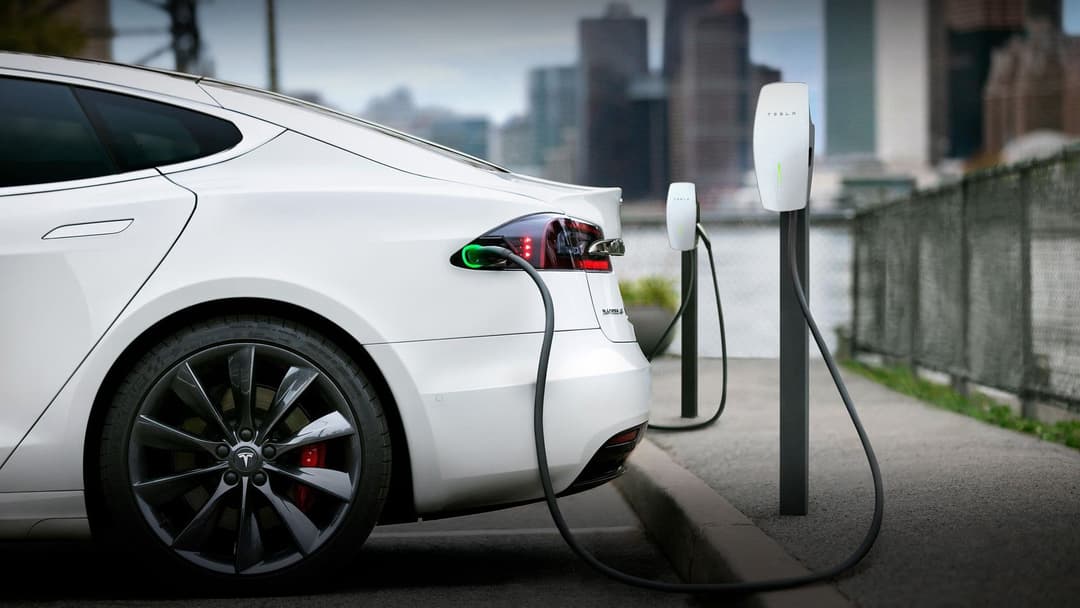
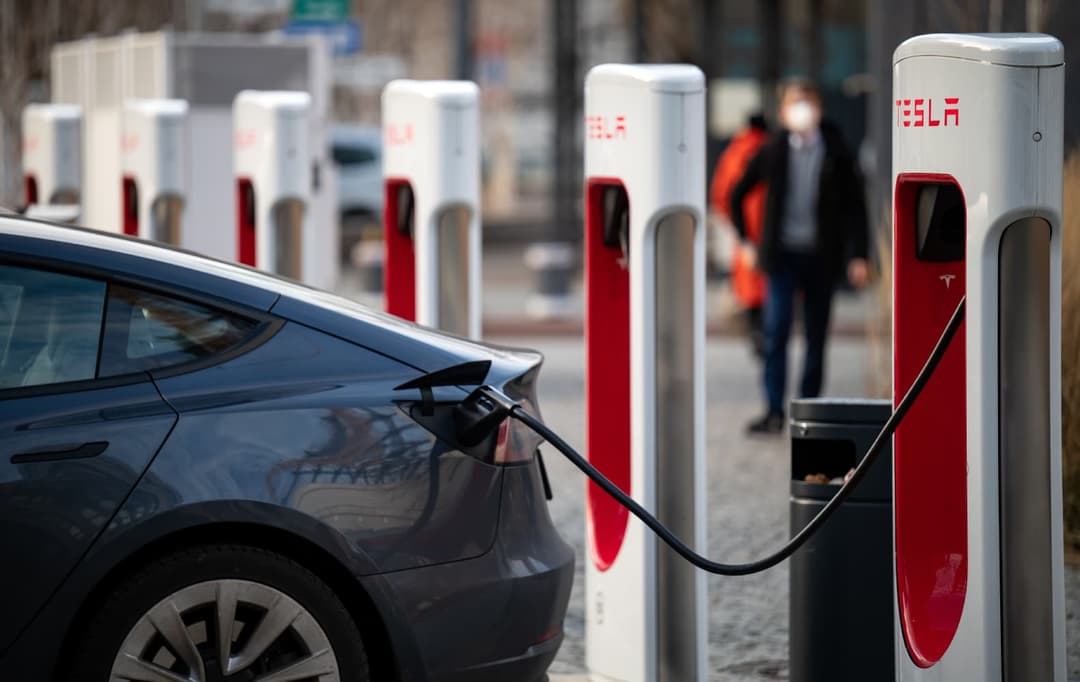
Tesla AC Destination Charger (left) and Tesla DC Supercharger (right)
For public fast/rapid DC charging, both the upper and lower sections on the inlet are used to support the high power output required. The Tesla Model 3 CCS charging inlet is found on the left rear side of the vehicle.
The Model 3 can be slow, fast, and rapid charged from public charging stations. In most cases:
- Slow charging requires a three-pin to Type 2 cable, usually supplied with the car.
- Public AC charging will feature a tethered Type 2 connector or may require a Type 2 to Type 2 cable.
- Rapid DC charging uses a tethered CCS connector which is part of the charging unit.
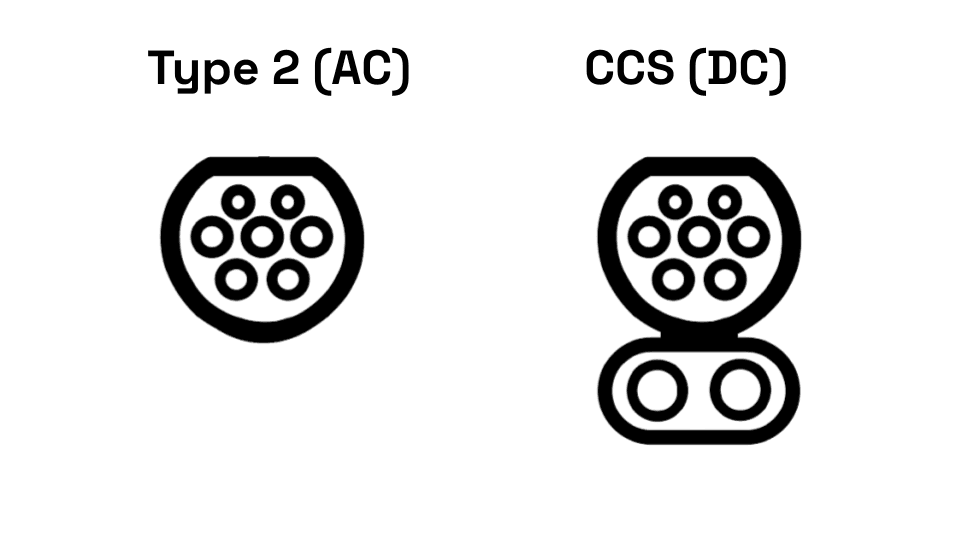
1. Find a public charging station for fast and rapid chargers
Plugshare is the easiest way to find any public AC and DC electric vehicle charging station in your area. It displays a map and overall rating of each charger from check-ins and comments.
Additionally, use the in-built maps in the Model 3 or charging providers app like Chargefox or Evie Networks to view the live availability of stations and check whether a stall may be out-of-action.
2. Connect charging cable to car
Driving up to the charger, ensure that your vehicle’s charging port, located on the left rear side, is nearest the stall. This may require you to drive in or reverse into the charging spot.
Once parked, grab the appropriate charging connector type from the stall’s holster, open the Model 3’s charging flap and any other caps, and firmly plug it into the vehicle.
3. Confirm charging has started
If you are using a Tesla Supercharger you can simply plug and charge and the amount will be automatically charged to your account. If you are using another charging provider’s mobile app or tap the RFID card on the stall to activate the charging session. You may need to press a start button on some charging stalls, too.
After a few seconds of communicating with the Model 3, you can see the charging status via the station’s screen, the vehicle’s driver instrument display, or the mobile app.
How Long Does it Take to Charge a Tesla Model 3?
The time it takes to charge a Tesla Model 3 will depend on: 1. the size of the battery pack and 2. the charging method.
The Tesla Model 3 come in two battery pack sizes:
1. 57.5 kWh for the Tesla Model 3 RWD variant; and
2. 75 kWh for the Tesla Model 3 Long Range and Performance variants.
Level 1 and 2 Charging (slow)
Level 1 and 2 Charging refers to charging from a power socket or a mounted charger. This is typically done at home, work or shopping centre car parks.
The Model 3 is capable of charging at a maximum of 11 kW with its onboard charger, however, this requires a three-phase power supply and charger, typically found at public car parks or business premises. The power supply in homes is generally single phase, meaning the maximum power you can draw from the onboard charger is ~7 kW.
Tesla Model 3 RWD
Charging a Model 3 RWD using a portable charger and a standard 10A power socket will take 26 hours. Upgrading the power source to 16A for a wall charger will reduce the time for a full charge to less than 6 hours.
Tesla Model 3 Long Range and Performance
Fully charging a Model 3 Long Range / Performance using a portable charger and a standard 10A power socket will take 32.9 hours. Upgrading the power source to 16A for a wall charger will reduce the time for a full charge to 7.2 hours.
Level 3 Charging (fast, rapid)
Tesla Model 3 RWD
The Tesla Model 3 RWD can support maximum DC charging of 170 kW DC, chargers with higher output than this will be throttled to this limit. As per the charge test conducted below, the Model has an average charge power of 77 kW DC over a charging session.
Charging a Tesla Model 3 RWD from 10% to 80% at a fast/rapid DC charging station can be done in as little as 28 minutes, providing 353km of range.
Tesla Model 3 Long Range and Performance
The Tesla Model 3 Long Range / Performance can support maximum DC charging of 250 kW DC, chargers with higher output than this will be throttled to this limit. As per the charge test conducted below, the Model has an average charge power of 103 kW DC over a charging session.
Charging a Tesla Model 3 Range / Performance from 10% to 80% at a fast/rapid DC charging station can be done in as little as 32 minutes, providing 438km of range.
It is generally recommended to limit the charging at rapid chargers to 80% to preserve battery health.
The times shown are only a guide only. Other factors that impact the the actual charging time of your car include: temperature, state of charge, charger compatibility. For a personalised estimates of the other variants use the zecar ev charging calculator.
How Much Does it Cost to Charge a Tesla Model 3?
The cost to fully charge a Tesla will depend on the size of the battery and the electricity rate of the charging station being used.
A Tesla Model 3 RWD will cost between $16 (grid @ $0.30/kWh) to $37 (supercharger @ $0.69/kWh) to fully charge, providing between 450 km to 490 km of range.
A Tesla Model 3 Long Range and Performance will cost between $21 (grid @ $0.30/kWh) and $49 (supercharger @ $0.69/kWh) to fully charge, providing between 514 km to 614 km of range.
Use the zecar EV charging calculator to find the cost and times to charge any EV using any charge method. The results can be personalised for different electricity costs and the level of charge required.
What is the Recommended Charge Level for a Tesla Model 3?
The Tesla Model 3 RWD’s battery pack uses the LFP chemistry which Tesla recommends charging to 100% at least once per week. Tesla recommends setting the charge limit to 100% for daily use.
The Tesla Model 3 Long Range and Performance variants uses a different chemistry referred to as NMC. The Tesla Model Y owner's manual recommends setting the charge limit to 90% for daily use. This will minimise degradation and preserve the longevity of the battery.
Occasional charging of the battery to 100% to maximise the car's range for longer trips and should not cause significant degradation of the battery.
➡️Read more: What are LFP, NMC, NCA Batteries in Electric Cars?
Tesla Model 3 Charging at Home
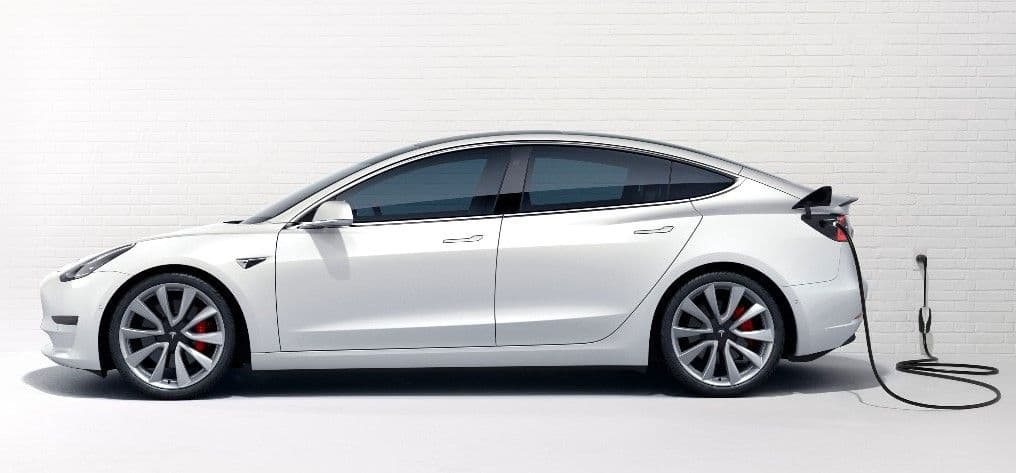
The Tesla Model 3 is compatible with almost all portable and wall-mounted chargers equipped with a type 2 plug.
For a quick convenient setup that can use existing electrical infrastructure (regular 10A socket), the Tesla Mobile Connector (a portable charger) is a popular option. This retails for $550 and can be purchased directly from Tesla’s website.
For faster charging speeds, the Tesla Wall Connector is a popular option. This retails for $750 and can be purchased directly from Tesla’s website.
Home charging while taking longer will likely result in less degradation of the battery.
Tesla Model 3 Charging using Public DC charging stations
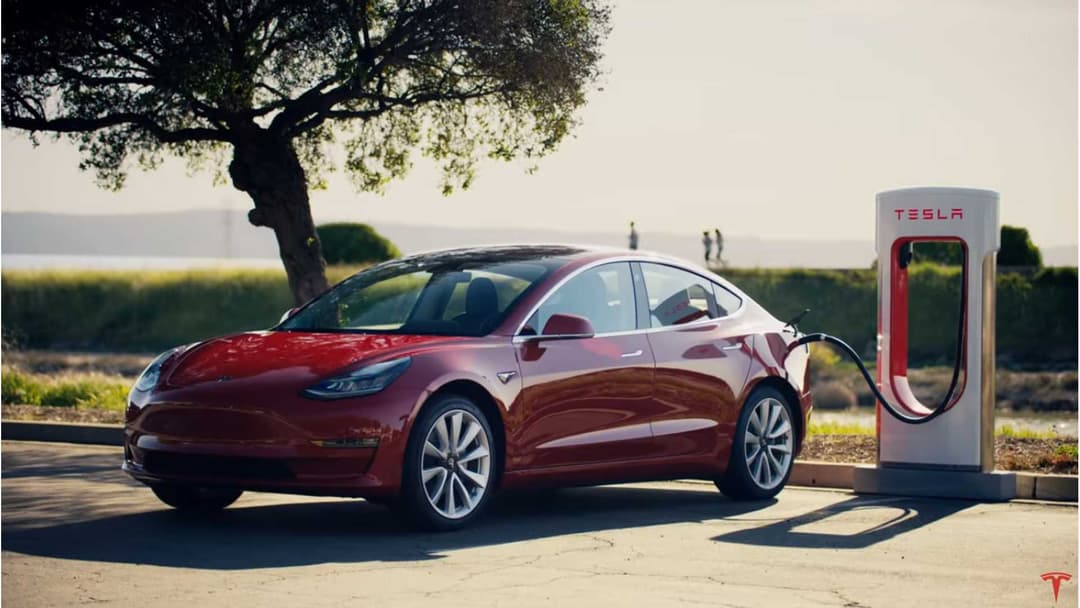
The Tesla Model 3 can be charged using all the major charging networks and public chargers. Most Tesla drivers will use the expansive and reliable Supercharger network for fast charging. Another advantage of using Tesla's Supercharger network is the convenience of 'plug, charge and go', there is no need to open an app to facilitate payment, as Tesla recognises your vehicle and automates payment.
Refer to this guide for all the key public charging providers including links to app downloads.
Excessive use of fast charging may accelerate the degradation of the battery due to the heat caused from fast charging.
Charging a Tesla Model 3 Bottom Line
The Tesla Model 3 charging speeds is considered compared to other electric cars. It provides relatively fast speeds using both AC chargers and DC fast chargers. Check out our fastest charging car list to see how the Model 3 ranks against its peers.
Frequently Asked Questions
About the author
Stay up to date with the latest EV news
- Get the latest news and update
- New EV model releases
- Get money savings-deal

